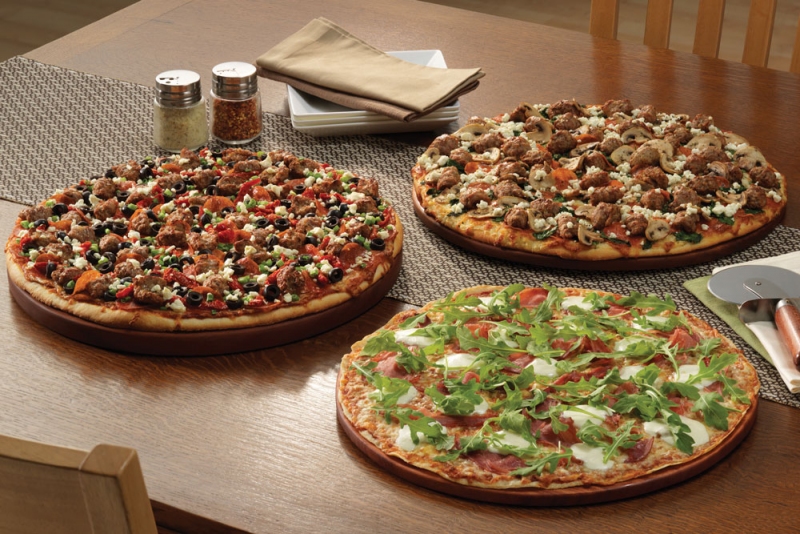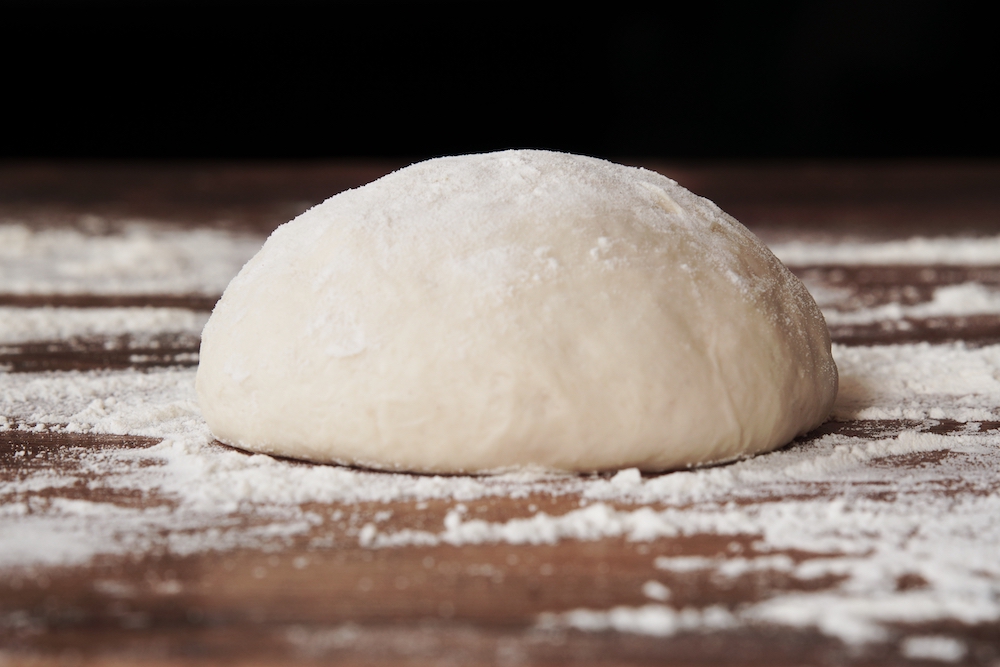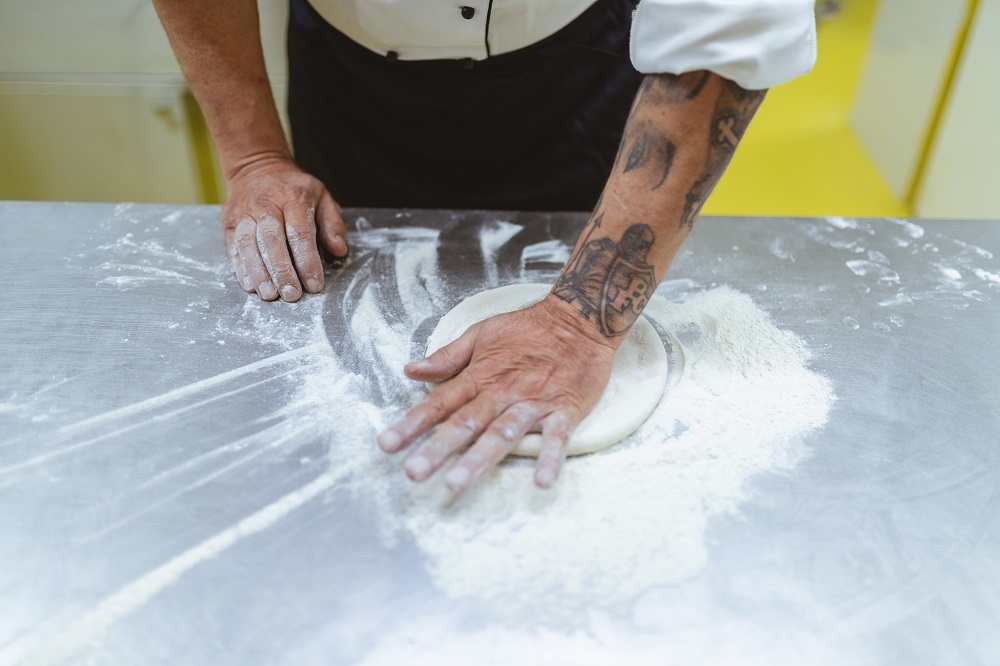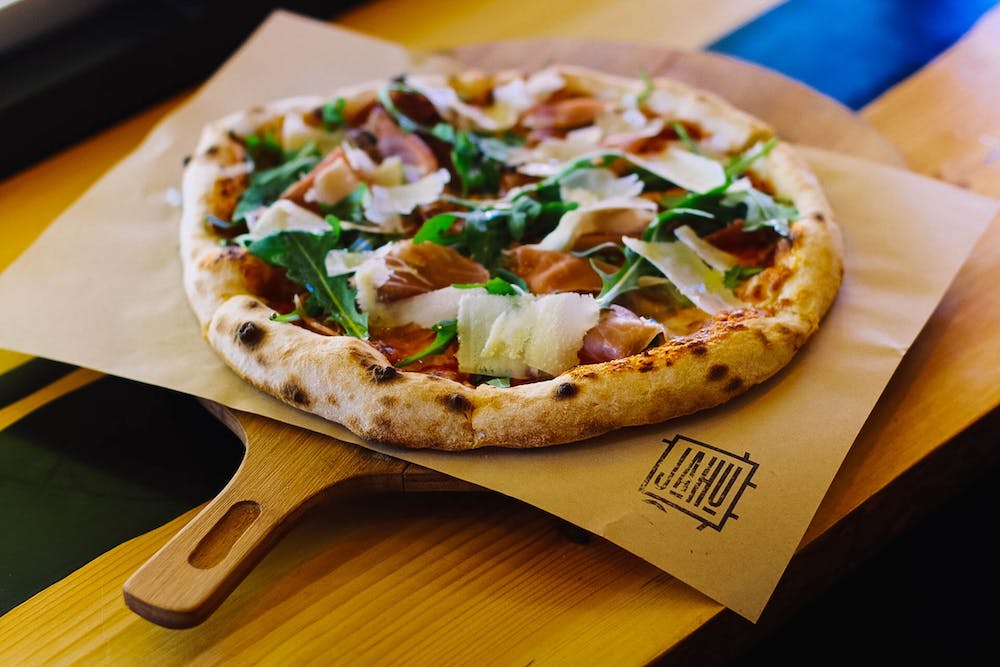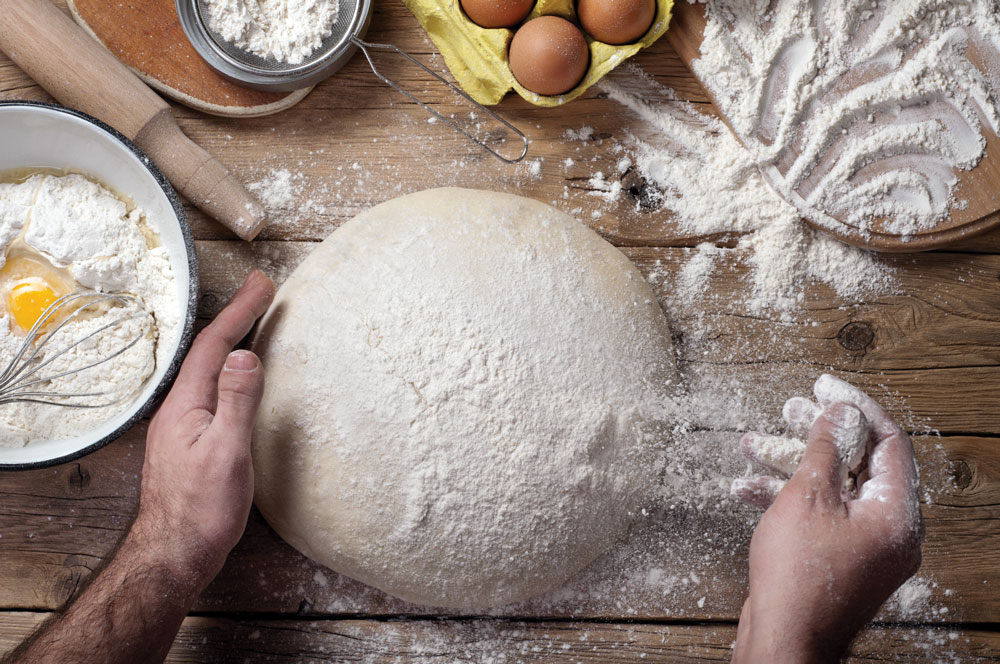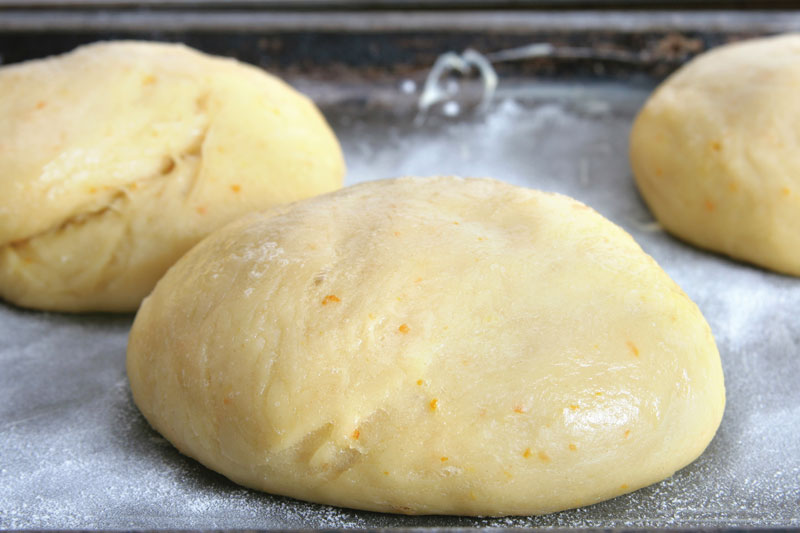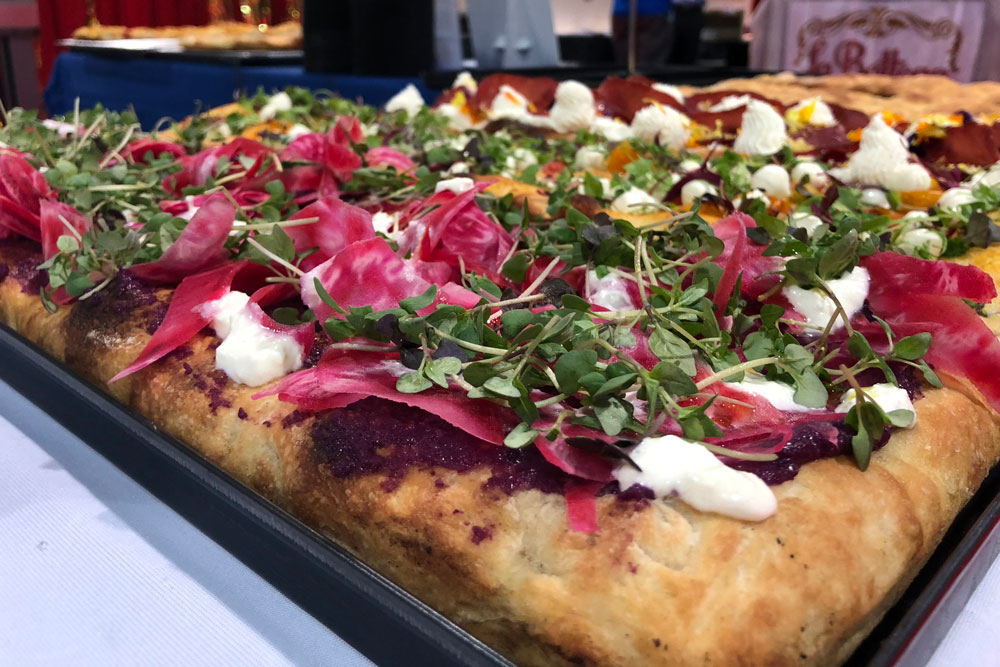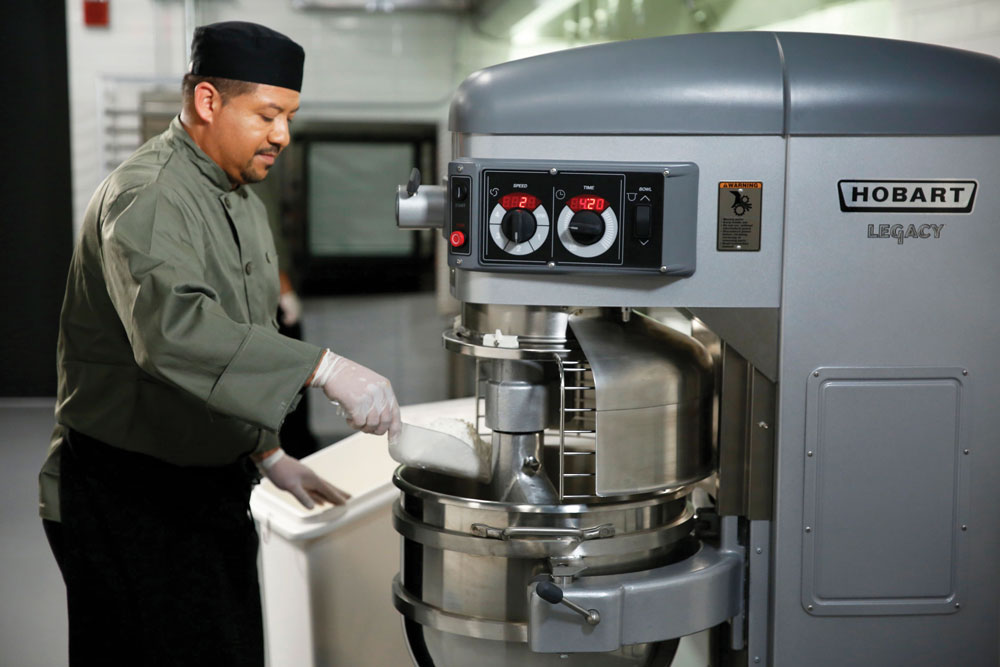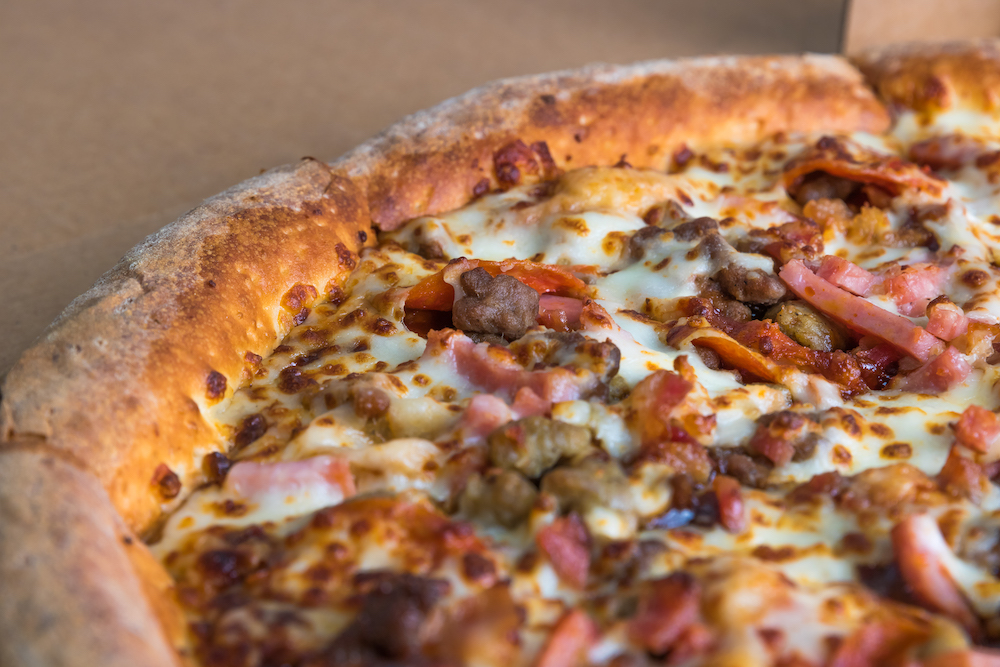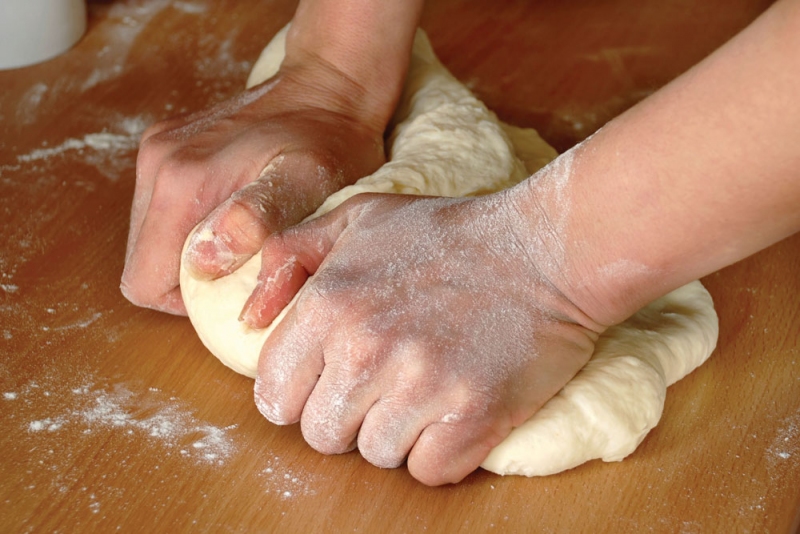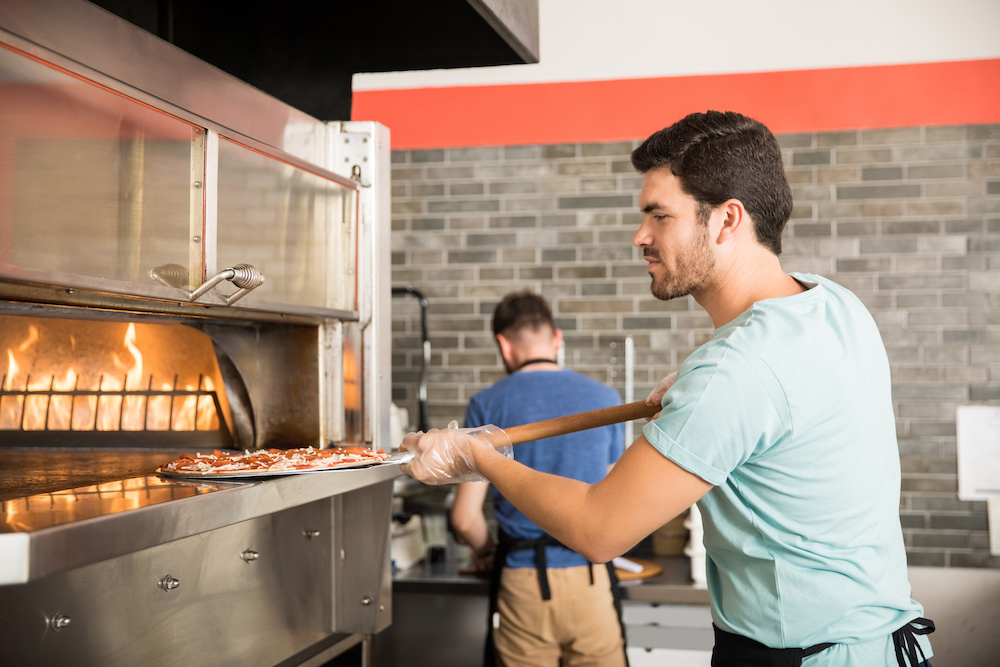Q We want to start offering a take-and-bake option on our menu. What should we keep in mind?
A Your greatest challenge will be making a pizza that is “consumer-proof,” one that will perform at a satisfactory level even if the consumer doesn’t bake it for several days or bakes it at the wrong temperature. When the customer comes back to complain, you can, of course, remind him that he didn’t follow the directions printed plainly on the box, but what good will that do? If you want to keep the customer, you’ll still end up giving him another pizza, so let’s start out by providing a pizza that will take all but the most severe abuse and neglect.
The dough should be made using flour with at least 12.5% protein content, and the fermentation must be well-controlled and limited to no more than 24 hours in the cooler. After opening the dough into a pizza skin, brush it with olive oil before dressing. Keep the sauce as thick as you can work with; adding too much water to the sauce will result in syneresis (water leaking out of the sauce upon standing), which can make a lasting (and negative) impression when the hungry patron picks up that first slice and sees water oozing from it. Too much water will also contribute to the development of a gum line in the finished pizza, making for a less-than-ideal eating experience.
My personal preference is to use a high-quality, cold-packed, full-tomato product. I then add a small amount of tomato paste to further thicken the sauce. If you’re planning to add onion and/or garlic to the sauce, be sure to boil them in a small amount of water or oil to deactivate the enzymes. Otherwise, these enzymes will catalyze the tomato pectin and cause it to gel, resulting in a sauce that ends up more like tomato jelly than pizza sauce.
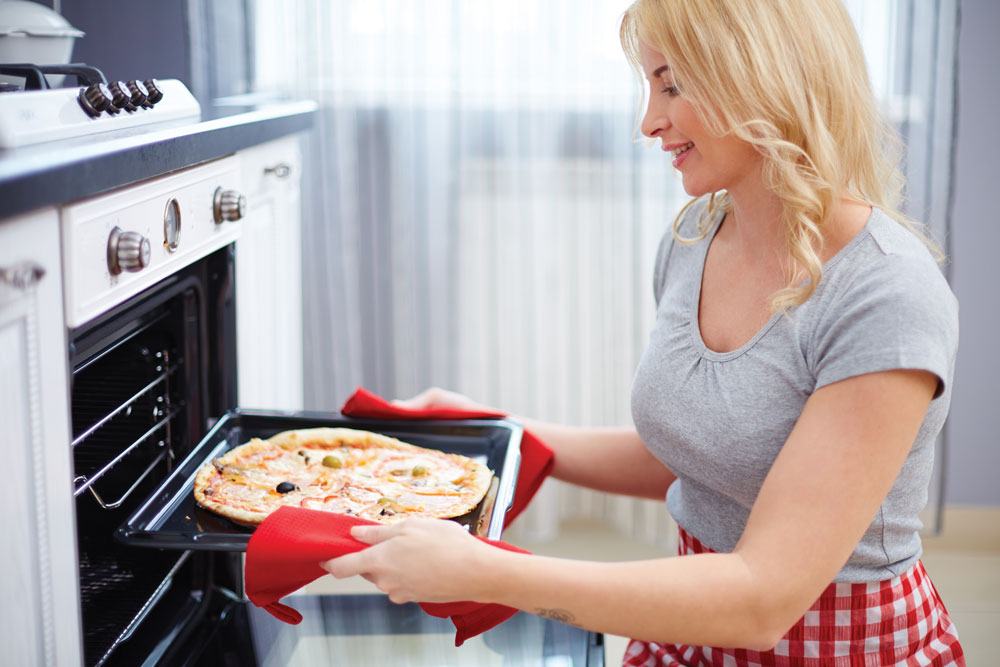
Once you have the sauce applied, don’t get too heavy-handed with vegetable toppings, since they tend to water out during the baking process. This makes for what I affectionately call a “swamp pizza,” which is as bad as it sounds. If you can get your hands on some moisture-controlled vegetable toppings, that will solve the problem. These are the same toppings added to just about every frozen pizza at your local supermarket. Unlike fresh veggies, moisture-controlled vegetable toppings hold their shape, don’t water out, and retain their color as well as their flavor when they’re baked on the pie.
Once the pizza is topped and almost ready to be sent on its way, I like to place an ovenable/bakeable fiber tray under it, which facilitates handling of the pie for the customer. After that, wrap the pizza in stretch wrap to hold it together, and place a use-by date label on the wrapper. Box the pizza just as you would any other pizza, which makes it easier for the consumer to carry it home. Be sure to develop good baking directions for the consumer to follow, including instructions for using different types of ovens, and you’re all set!
One last piece of advice: Do not falsely compare your take-and-bake pizzas to your regular in-store baked pizzas. They’re just not going to be the same. But you can still market the option as a way to enjoy your pizzas at home, any time. Even if you don’t normally sell take-and-bake pizzas, you might want to consider offering them during those periods of the year when many customers are glued to their TV screens, such as watching a major sporting event, and want to enjoy pizza with as little effort as possible. They can just pop your take-and-bake into a 425° oven and have a fresh, hot pie ready to eat by halftime!



